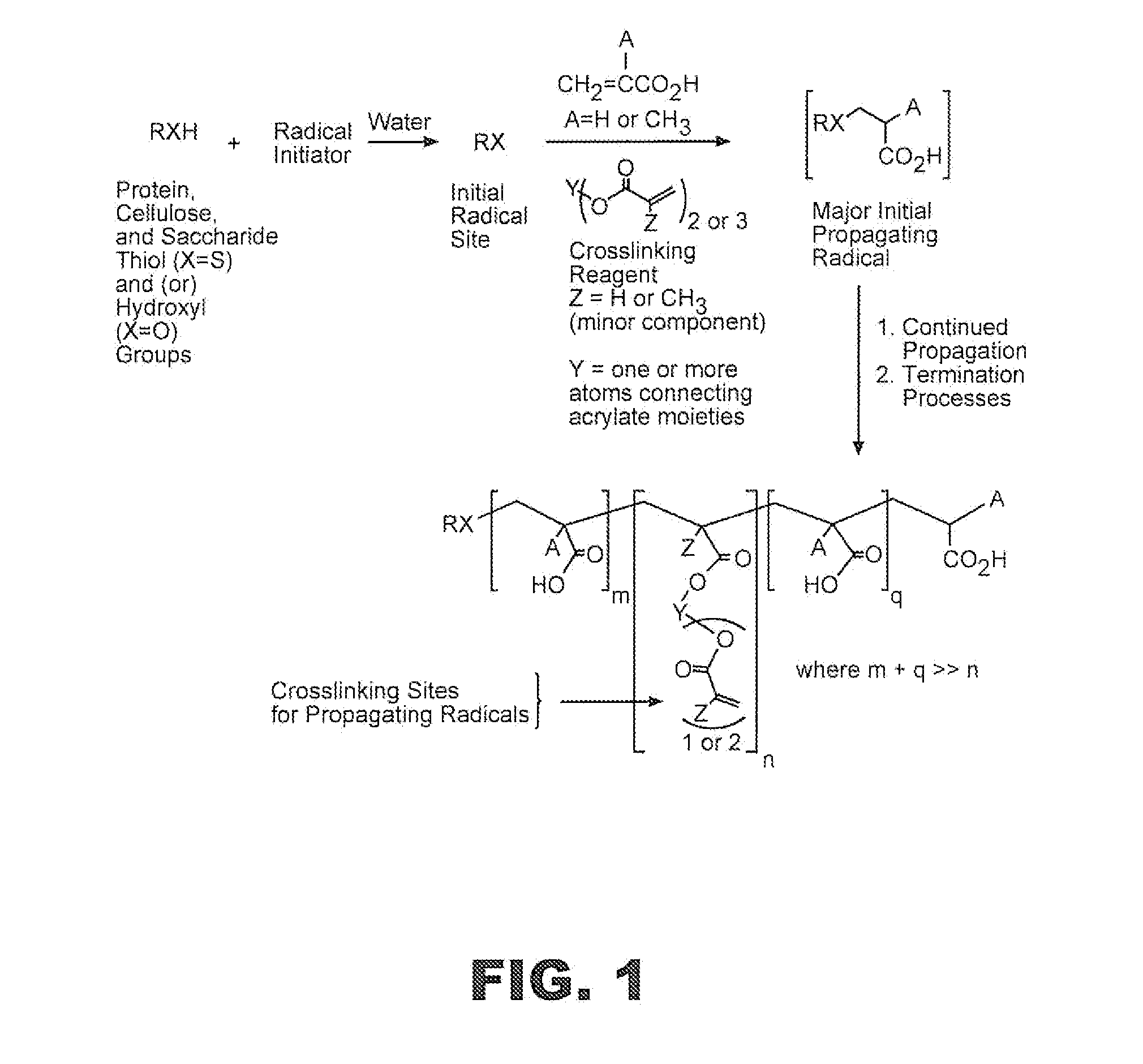Absorbent Protein Meal Base Hydrogels
a protein meal and hydrogel technology, applied in the direction of protein compositions from vegetable seeds, peptides, plant/algae/fungi/lichens ingredients, etc., can solve the problems of high price of soy protein isolate, acrylate based cross-linkers are not available at bulk scale, and achieve high water uptake ratios
- Summary
- Abstract
- Description
- Claims
- Application Information
AI Technical Summary
Benefits of technology
Problems solved by technology
Method used
Image
Examples
Embodiment Construction
[0009]The present invention is generally directed to the formation of absorbent and superabsorbent hydrogels utilizing an animal or vegetable meal base. Useful vegetable proteins sources include, for example, from soy bean meal, cotton seed meal, palm kernel meal or the like. Useful animal proteins include bone meal. At this point it should be noted that the term absorbent hydrogel is meant be inclusive of all hydrogels herein, while the term superabsorbent hydrogel is an absorbent hydrogel (typically a polymer) that can absorb about 100 times or more its weight in water and does not easily release this liquid under pressure.
[0010]In accordance with the method of the present invention, monomers are polymerized in the presence of plant or animal meals, or mixtures thereof to produce high performance gels. Monomers that may be utilized include acrylic acid, methacrylic acid, other alpha, beta-unsaturated carboxylic acids or their derivatives, alpha-methyl acrylic acid or acrylamide an...
PUM
| Property | Measurement | Unit |
|---|---|---|
| temperature | aaaaa | aaaaa |
| particle size | aaaaa | aaaaa |
| swelling | aaaaa | aaaaa |
Abstract
Description
Claims
Application Information
 Login to View More
Login to View More - R&D
- Intellectual Property
- Life Sciences
- Materials
- Tech Scout
- Unparalleled Data Quality
- Higher Quality Content
- 60% Fewer Hallucinations
Browse by: Latest US Patents, China's latest patents, Technical Efficacy Thesaurus, Application Domain, Technology Topic, Popular Technical Reports.
© 2025 PatSnap. All rights reserved.Legal|Privacy policy|Modern Slavery Act Transparency Statement|Sitemap|About US| Contact US: help@patsnap.com

